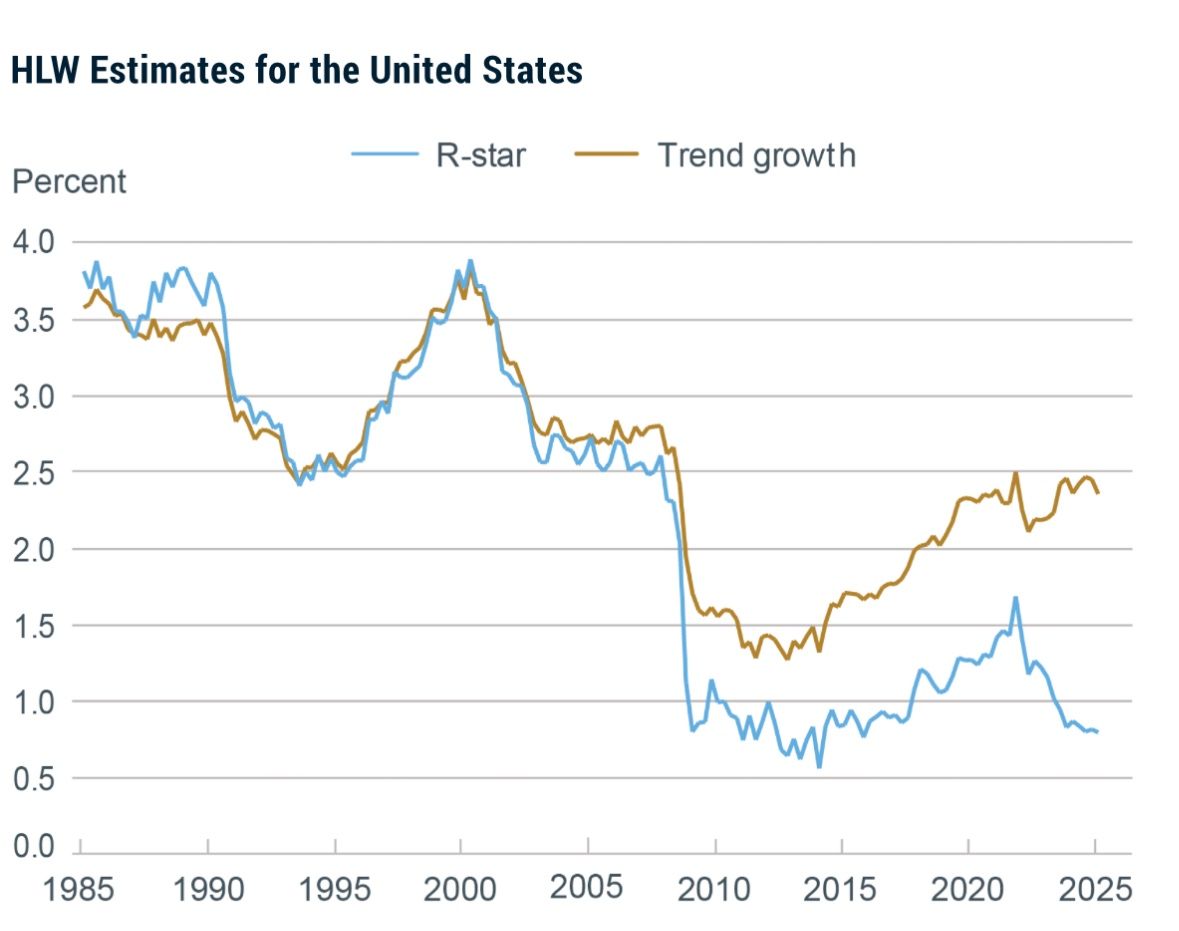IonQ CRO Alameddine Rima sells $4.6m in shares
Macro (BCBA:BMAm) 101: What’s R*, the real equilibrium interest rate?
When setting interest rates, Central Banks aim to achieve price stability (and in some cases also maximum employment like the Fed).
To do that, they need to calibrate rates around their interpretation of neutral: raise rates above this level if you need to cool down the economy and price pressures, and cut rates below neutral if you need to stimulate the economy.
This is why Central Banks use the concept of r* or real equilibrium interest rate.
R* is the estimated real rate at which the economy doesn’t overheat or excessively cool down.
The chart below shows r* in the US is estimated to be around +1%, which means that if core inflation sits at target the nominal neutral rate would be 3%. Given inflation has been running above target for years now, the Fed is applying a somehow restrictive policy with Fed Funds at 4.25% (above neutral).
But what are the inputs Central Banks use when calculating r*?
1) Demographics: a bigger labor force means stronger potential growth and a higher equilibrium rate and vice versa
2) Productivity: a more productive use of capital and labor implies a higher equilibrium rate and vice versa
3) The availability of risk-free assets: an ample supply of risk-free collateral implies higher equilibrium rate and vice versa
Yesterday’s Fed minutes showed some FOMC members believe r* has increased given the persistent use of deficits (more supply of Treasury collateral) and AI-driven productivity gains.
This would make the Fed 4.25% rate not so restrictive as neutral would be seen higher at around 3.50%.
What do you think?
***
This article was originally published on The Macro Compass. Come join this vibrant community of macro investors, asset allocators and hedge funds - check out which subscription tier suits you the most using this link.
